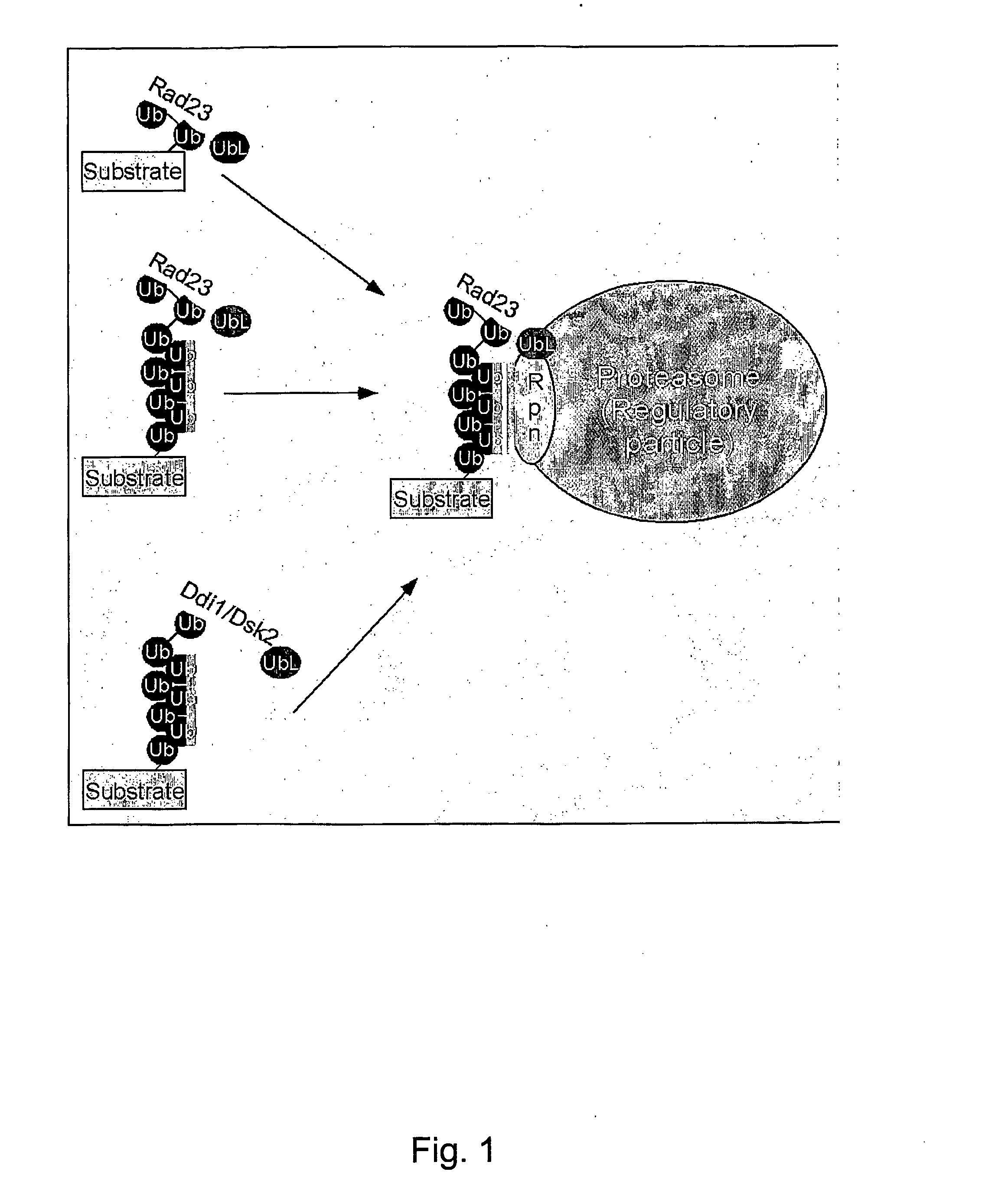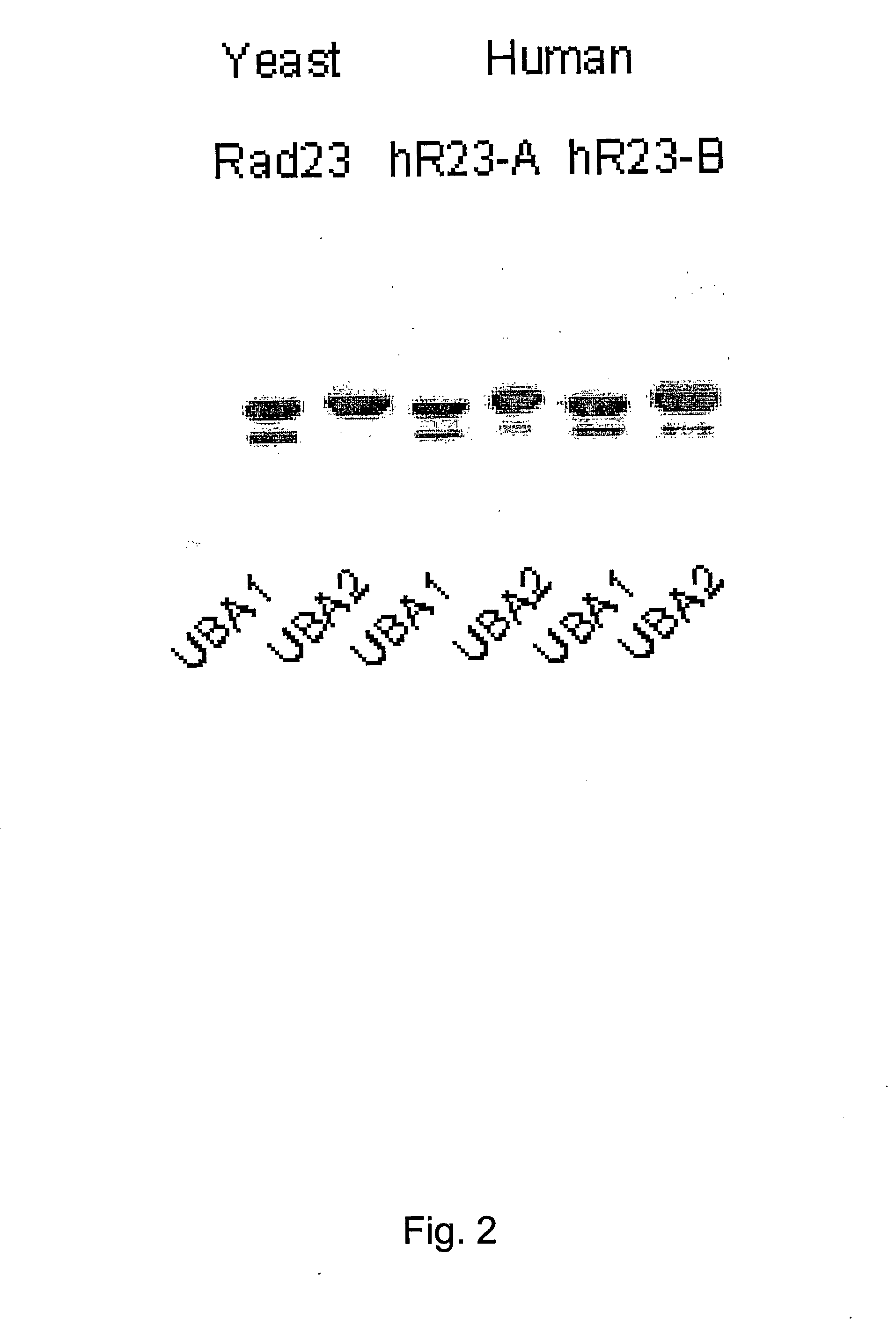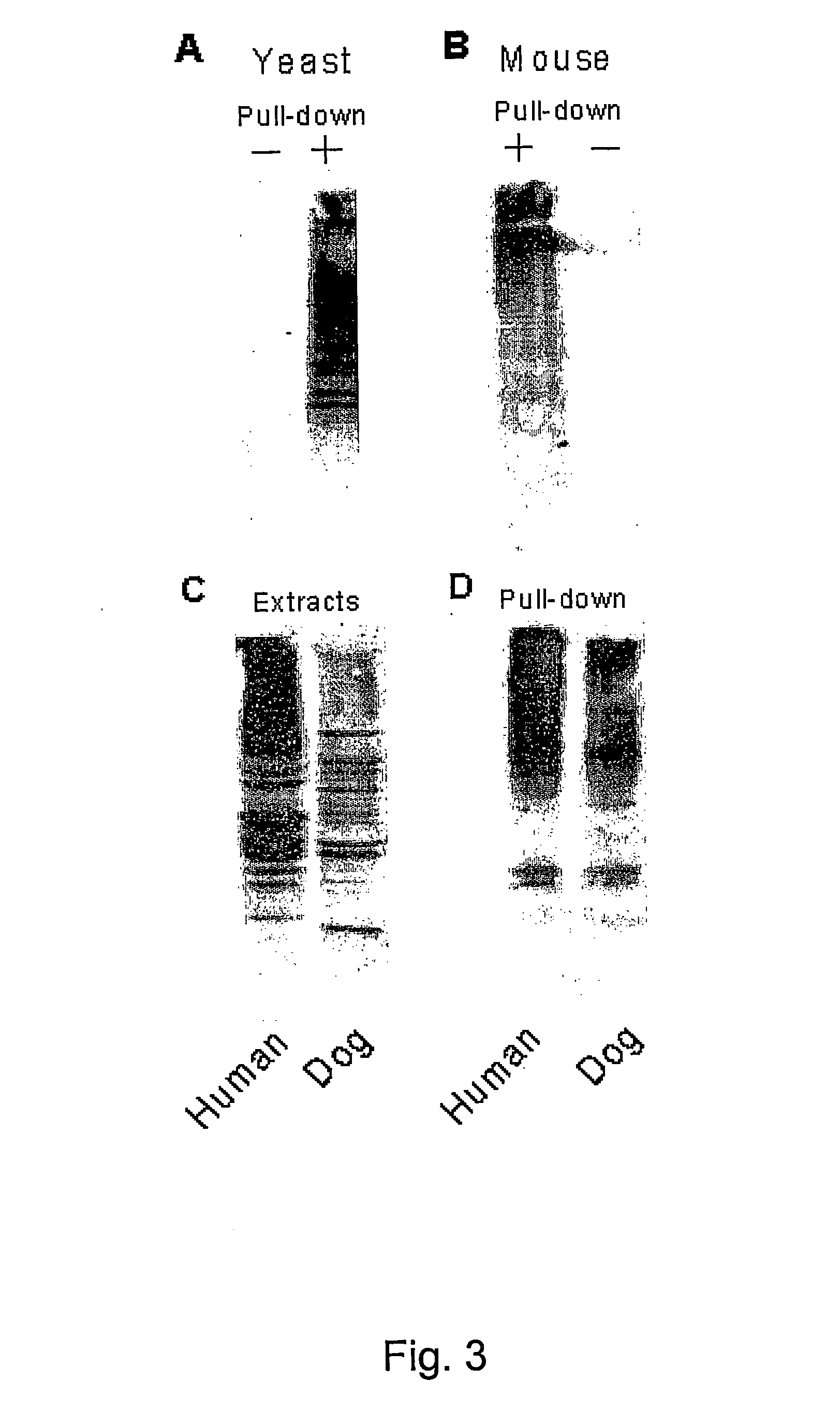Diagnostic methods for protein profiling
- Summary
- Abstract
- Description
- Claims
- Application Information
AI Technical Summary
Benefits of technology
Problems solved by technology
Method used
Image
Examples
example 1
Materials and Methods
[0106] Yeast strains and plasmids. A bar1Δ mutant was constructed using plasmid pJGSST1, in the haploid yeast strain JD47-13C (provided by Dr. J. Dohmen) (JD47-13C: MATa his3-Δ200 trp1-Δ63 lys2-801 ura3-52 leu2-112). The yeast RAD23 gene was deleted in JD47-13C using plasmid pDG28 (provided by Dr. R. D. Gietz). KMY1188 is an FOA-resistant derivative of this rad23Δ strain. Plasmids encoding Flag-Rad23, and the GST-set of Rad23 fusion proteins were described previously (see, for example, Araki et al. (2001) J. Biol. Chem. 276:18665-18672).
[0107] Protein and immunological methods. Pulse-chase and immunoblotting experiments were performed essentially as described previously (Ortolan et al. (2000) Nat. Cell Biol. 2:601-608 and Clarke et al. (2001) Mol. Cell. Biol. 21:1997-2007, both references specifically incorporated by reference).
[0108] Briefly, exponential-stage yeast cells (˜30 ml volume at A600=1) were washed and suspended in labeling buffer containing 250 μ...
example 2
Rad23 Can Bind Ubiquitinated Proteins In Vivo
[0124] Human hHR23-B was expressed as a fusion to glutathione S-transferase. Protein extracts were applied to glutathione-Sepharose, and the proteins bound to GST-hHR23-B were examined in an immunoblot. A significant reaction, that extended from ˜20 kDa to greater than 200 kDa was detected against anti-Ub antibodies (results not shown). These proteins were bound to hHR23-B very tightly, and could only be dissociated by treatment with SDS. No anti-Ub cross-reacting material was detected in a second lane containing only GST. These data demonstrate that human Rad23 binds ubiquitinated proteins that can be recovered following a single affinity step.
PUM
| Property | Measurement | Unit |
|---|---|---|
| Affinity | aaaaa | aaaaa |
Abstract
Description
Claims
Application Information
 Login to View More
Login to View More - R&D
- Intellectual Property
- Life Sciences
- Materials
- Tech Scout
- Unparalleled Data Quality
- Higher Quality Content
- 60% Fewer Hallucinations
Browse by: Latest US Patents, China's latest patents, Technical Efficacy Thesaurus, Application Domain, Technology Topic, Popular Technical Reports.
© 2025 PatSnap. All rights reserved.Legal|Privacy policy|Modern Slavery Act Transparency Statement|Sitemap|About US| Contact US: help@patsnap.com



